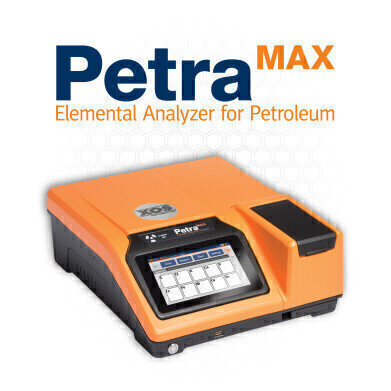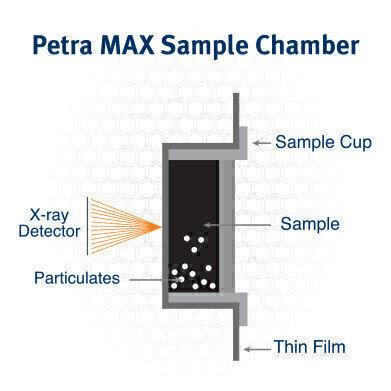-
 Image A - Petra MAX
Image A - Petra MAX -
 Image B: Petra MAX sample Chamber
Image B: Petra MAX sample Chamber
Measurement and Testing
Simultaneous ASTM D4294 and Metals in Crude Oil Analysis
Mar 21 2018
Petra MAX, by XOS, delivers ASTM D4294 sulfur compliance with simultaneous measurement of nickel, vanadium, iron, and nine other elements at sub-ppm levels. Nickel and vanadium are naturally occurring in crude and are known to rapidly deactivate catalysts. Iron is typically introduced in crude during transportation, and can lead to pump exchanger fouling and off-specification coke. NYMEX has adopted nickel and vanadium quality specifications for light sweet crude oil futures contracts for deliveries in January 2019 and beyond (≤8 ppm for nickel and ≤15 ppm for vanadium). For certification purposes, NYMEX will use ASTM D5708B methodology, which utilises Inductively Coupled Plasma (ICP) technology. Since ICP requires extensive sample prep and can take up to 12 hours to obtain results, this is not an efficient solution for blending and transfer testing management. However, Petra MAX has shown similar or better precision than D5708 analysis and delivers results in just minutes. (Please refer to image A)
Crude oil presents unique challenges for ASTM D4294 analysis. While sulfur containing compounds in crude oil are primarily comprised of organosulfur compounds that remain homogeneous in hydrocarbons, interferences like Si, Ca, Cl, Fe and water are commonly present and will settle to the bottom of a sample. These interferences can absorb the X-ray signal and reduce the concentration of sulfur reported. To prevent biased results, many laboratories centrifuge all crude oil samples prior to analysis by traditional D4294 instruments. This increases the amount of processing and time it takes to perform the measurement. Petra MAX boasts an advanced sample introduction technique that eliminates the need to centrifuge the crude sample before analysis. Once inserted, the sample turns vertically on its side, which directs interfering particulates away from the point of analysis to ensure an accurate sulfur result. (Please refer to image B)
Petra MAX also offers automatic matrix correction for carbon to hydrogen (C/H) ratio in sulfur analysis using ASTM D4294 and ISO 8754 methodology. These methods state that if the C/H ratio of the unknown sample is different from the material used for calibration, then significant bias in the sulfur result may be seen. Petra MAX uses advanced software with automatic C/H ratio correction, which analyzes the X-ray spectrum of the sample and corrects for the difference.
Powered by HDXRF, Petra MAX™ delivers sulfur measurements with a limit of detection as low as 5.7 ppm in hydrocarbons like crude oil, diesel, gasoline, jet fuel and lubricants.
Download the Petra brochure to learn more.
Digital Edition
PIN 25.1 Feb/March
March 2024
In This Edition Safety - The technology behind the ION Science Tiger XT - Safety with ammonia and LOHCs as hydrogen carriers Analytical Instrumentation - Discussion on new tribology te...
View all digital editions
Events
Apr 28 2024 Montreal, Quebec, Canada
Apr 30 2024 Birmingham, UK
May 03 2024 Seoul, South Korea
May 05 2024 Seville, Spain
May 06 2024 Riyadh, Saudi Arabia

















